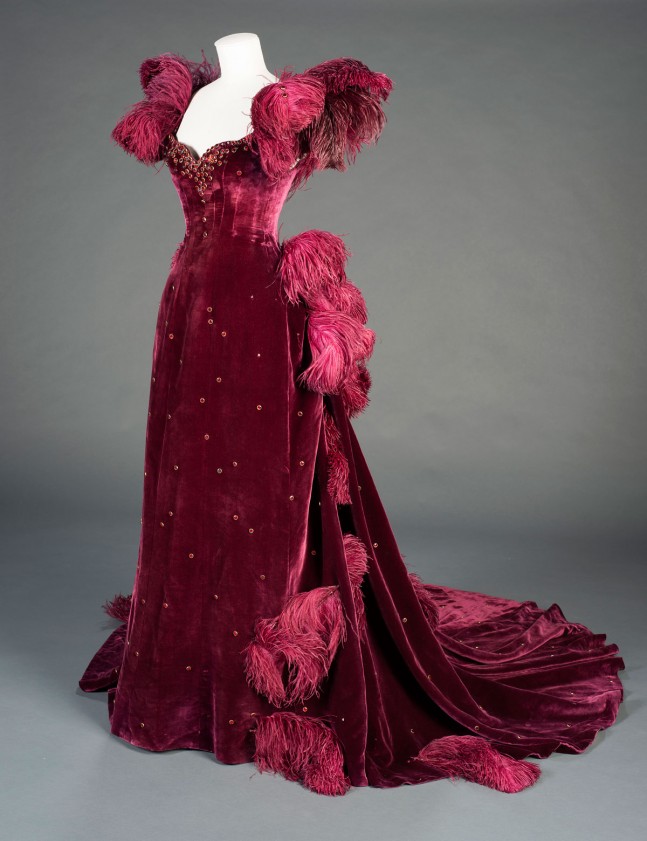
This post is in partnership with the Harry Ransom Center at The University of Texas at Austin. A version of the article below was originally published on the Ransom Center’s Cultural Compass blog.
Ten years after the release of Gone With the Wind, actress Vivien Leigh modeled real-life, historic nineteenth-century clothes for pioneer fashion historian and Byron scholar Doris Langley Moore for the publication The Woman in Fashion (1949). Moore would go on to found the Fashion Museum at Bath, England (originally named The Museum of Costume) in 1963, with her extraordinary personal collection as the foundation. A portion of this collection of women’s clothing and accessories from 1800–1927 was seen throughout the pages of The Woman in Fashion. Although Moore felt that historic fashion could be experienced best through presentation on a live model, she would eventually contend that display on an inanimate mannequin was safer for the long-term preservation of historic garments.
The 1877 gown worn by Vivien Leigh in the photograph here post-dates the costumes she wore in Gone With the Wind by four years (the storyline in Gone With the Wind ends in 1873). And yet this and other 1860s and 1870s gowns pictured in The Woman in Fashion—as well as contemporary nineteenth-century illustrations in Godey’s Lady’s Book (the character of Scarlett O’Hara was a reader)—attest to the skill and creativity of Gone With the Wind costume designer Walter Plunkett in paring down their lavish embellishment and extreme volume to exude a more contemporary, streamlined 1930s screen glamor. This is especially apparent in the ball gown. Though lush with ostrich feathers and sparkling jewels—two favorite trimmings of Hollywood evening gowns of the 1930s—an abundance of ruffles, lace, bows, or rosettes as seen in early 1870s counterparts are conspicuously absent.
The 1877 gown worn by Leigh now resides in the Helen Larson Collection at the Fashion Institute of Design and Merchandising (FIDM) Museum in Los Angeles, California. Doris Langley Moore was a mentor to Helen Larson, who amassed an impressive fashion collection of her own, including some of the garments owned by Moore. In addition to her personal collection, Larson also assembled an alternate collection of historic clothing that she rented to Hollywood studios for period films, including My Fair Lady (1960) and The Great Gatsby (1970). Many of these costumes now reside at Western Costume in Los Angeles, the same company that rented or created costumes for Gone With the Wind.
Historic fashions of the 1860s from the Larson Collection, of the same silhouette as the Gone With the Wind curtain dress, are currently on view at FIDM’s galleries in Orange County for the exhibition Hooped: Dress of the 1860s. As part of the exhibition programming, conservator Cara Varnell talked about her experiences conserving the Gone With the Wind costumes in the Ransom Center’s David O. Selznick collection. The exhibition is on view in Los Angeles through February 20, 2016.
Read more about Gone With the Wind and see more from the archives here, at the Harry Ransom Center Cultural Compass blog.
More Must-Reads from TIME
- Donald Trump Is TIME's 2024 Person of the Year
- Why We Chose Trump as Person of the Year
- Is Intermittent Fasting Good or Bad for You?
- The 100 Must-Read Books of 2024
- The 20 Best Christmas TV Episodes
- Column: If Optimism Feels Ridiculous Now, Try Hope
- The Future of Climate Action Is Trade Policy
- Merle Bombardieri Is Helping People Make the Baby Decision
Contact us at letters@time.com